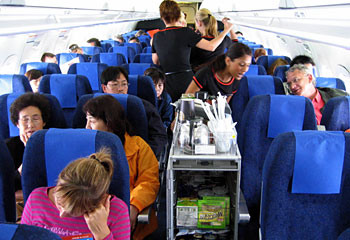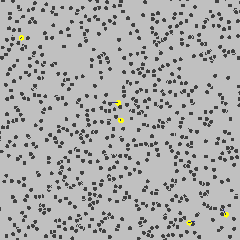Since our trip is coming a close shortly, I began to ponder about my ride on Delta Flight 241 from Rome to Atlanta. I’m going to be stuck in an airplane cabin for eleven and a half hours. You know, you begin to think about all the things you HATE about airplanes when faced with that number. Like how long the lines for the bathroom is. How you really wish you had gotten a window seat. How you wish the old guy next to you would respect personal space. Or how you wish you could have been seated next to someone more attractive that you wouldn’t mind striking up a conversation with. The list goes on, but there is one that you KNOW you are going to deal with. And that’s the dry, arresting air.
Remember there is NO SMOKING on this flight.
Before my flight to Rome, I was suffering from really bad allergies (as some of my friends have outlined in earlier blog posts… my allergies are BAD). The dry air in the plane cabin really assisted in the allergies. While I loved that the allergies were gone, now it felt like it was so dry that my nose was going to bleed.
So, I began to ponder, how do they get the air SO DRY. At first I thought that it could possibly be some sorcery or demon magic because we all know that the airline companies have sold their souls to the devil.
She's increasing baggage fees, RIGHT NOW.
Rather than some sort of Santeria, airlines simply use HEPA filters. While I cannot conclude myself that all planes are sorcery-free, I can tell you with 100% confidence the mechanism for air filtration.
Air filters on airlines are what they use in hospitals. The efficiency of cleaning all those particles is upwards of 99.99%. There are three mechanisms of filtration that occur.
The first is direct interception. This is the most suspected type of filtration. It’s just like when you are done cooking your wonderful pasta that you’ve imported from Italy, and you are filtering it through your colander.
It's so GOOD.
The second type is a bit more complicated. It involves inertia. Essentially, particles that are denser than air just stick to the solid parts of the filter. It’s hard to keep objects denser than air in the air, so it makes sense. Every see a lead zeppelin? I don’t think so. It would sink faster than a lead balloon from what I can gather. These denser-than-air particles would rather simply stay attached to air filter.
The third type is even more complicated. This is for very small particles are bombarded by very small molecules in the air. This causes the particle to have an unpredictable path. Thus because its trajectory is determined by small molecules moving randomly in the air, the trajectory of the particle becomes more erratic. This is used for filtration because eventually, it will get pumped onto the pores in the air filter, and will adhere there.
It's like me on market day in Siena.
Here's a really informative video from Pall Corporation on how their air filters work.
I"m sure the music encourages the pores to filter better
With these three methods employed, it essentially creates a completely sterile air environment. Considering that planes air cycles through filtrations 20 times an hour while an office building’s air is cycled only 12 times an hour, airplanes have clean air. They are so clean that hospitals use the same types of filtration.
With all this filtration, it really takes out all the moisture in the air. They also want that because moisture can lead to mold, bacterial growth and other pretty bad things when confined to a small space. So, you can reliably believe your airplane has clean air. Now if you sit next to a sick person, you might want to ask for that oxygen mask…
These wonderful sponsors gave me great information and images!
http://www.pall.com/main/Aerospace-Defense-Marine/Microbial-Removal-Cabin-Air-Filters.page#bacteria
http://strongholdsmashers.com/wp-content/uploads/2011/10/magic.jpg
http://www.visualphotos.com/photo/2x1905129/cooked_pasta_being_taken_out_of_colander_902289.jpg
http://pubs.acs.org/doi/full/10.1021/es060424e
http://en.wikipedia.org/wiki/Brownian_motion
With all this filtration, it really takes out all the moisture in the air. They also want that because moisture can lead to mold, bacterial growth and other pretty bad things when confined to a small space. So, you can reliably believe your airplane has clean air. Now if you sit next to a sick person, you might want to ask for that oxygen mask…
These wonderful sponsors gave me great information and images!
http://www.pall.com/main/Aerospace-Defense-Marine/Microbial-Removal-Cabin-Air-Filters.page#bacteria
http://strongholdsmashers.com/wp-content/uploads/2011/10/magic.jpg
http://www.visualphotos.com/photo/2x1905129/cooked_pasta_being_taken_out_of_colander_902289.jpg
http://pubs.acs.org/doi/full/10.1021/es060424e
http://en.wikipedia.org/wiki/Brownian_motion




No comments:
Post a Comment